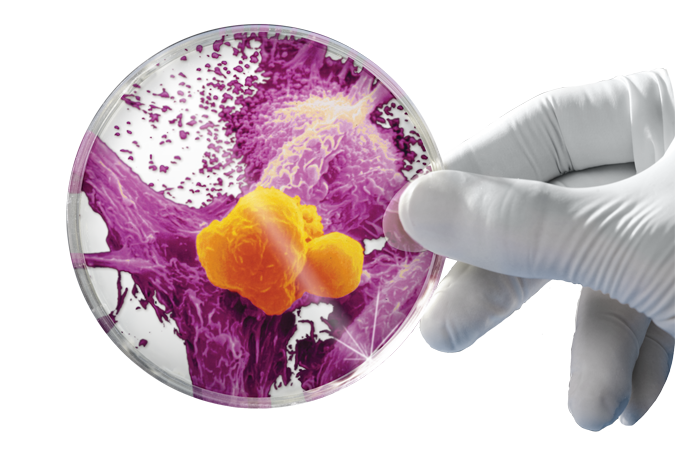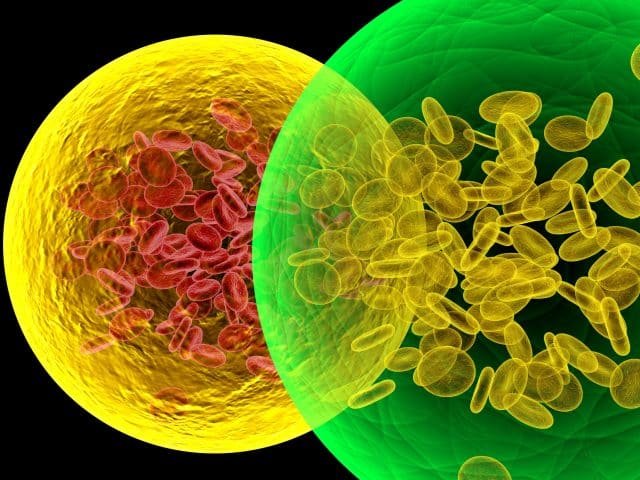 With the rise of research in immunotherapy and its increasing success in treating cancers, we know now more than ever that the immune system and cancer are connected. In fact, scientists have discovered in the last few decades just how important the immune system is in our body, as it does more than just protect us from infections and minor illnesses. It also keeps chronic diseases at bay. But although it may protect us from a hundred potential diseases, some do find ways to escape its mechanisms.
With the rise of research in immunotherapy and its increasing success in treating cancers, we know now more than ever that the immune system and cancer are connected. In fact, scientists have discovered in the last few decades just how important the immune system is in our body, as it does more than just protect us from infections and minor illnesses. It also keeps chronic diseases at bay. But although it may protect us from a hundred potential diseases, some do find ways to escape its mechanisms.
It’s also important to understand that the immune system is innately powerful, but it can certainly be damaged. Factors like frequent infections, radiation therapy, organ transplants, and major trauma can cause the immune system to weaken. When it’s not working at it’s best, the body can develop several kinds of disorders.
Immune System Disorders
- Autoimmune diseases: These occur when the immune system is no longer ale to differentiate between proteins that are “self” and “non-self,” and thus begins to attack the body itself.
- Allergies: When the body is exposed to allergens, it has an increased production of IgE immunoglobins, which produces a more severe inflammatory response.
- Acquired immune deficiency disorder (AIDS): When parts of the immune system, mostly T helper cells, disappear or become damaged. This occurs mostly as a result of infection with harmful viruses.
- Immune complex disease: This occurs when antigen-antibody complexes build up and can’t escape the body’s tissues, which ultimately destroys the organs nearby
- Common variable immunodeficiency (CVID): This is a condition that involves multiple autoimmune disorders at once, which might include inflammatory bowel disease (IBD), autoimmune thrombocytopenia, and autoimmune thyroid disease
- Cancer: The most significant and potentially fatal consequence.
A weakened immune system leaves the body vulnerable to developing not only minor illnesses, but also more nefarious diseases and chronic conditions, cancer being the most dangerous.
How exactly does cancer get past the immune system’s protection?
Researchers have shown that the immune system helps the body to form tumor immunogenicity, which is the ability to produce adaptive immune responses against cancer tumors. This means it’s designed to fight against cancer. Unfortunately, cancer is smart. It’s smarter than the immune system. Through a process called “immunoediting,” cancerous cells outsmart the immune system and cause the disease to form and grow. Immunoediting consists of three phases, elimination, equilibrium, and escape.
Phase One – Elimination
The first phase of immunoediting, also known as cancer immunosurveillance, involves a group of innate and adaptive immune responses that immune cells give off towards the collection of cells that are most likely to create a tumor. When normal cells become tumor cells, some of the antigens on their surface are altered and become absorbed into the bloodstream. Because most of these cells are tumor antigens, the innate immune system responds by sending out inflammatory signals. Then, Natural Killer (NK) cells, NK T lymphocytes, macrophages, and dendritic cells begin to penetrate the tumor cells. They surround the affected cells and produce cytokines, killing off many of the tumor cells as well as stopping the growth of future ones. They inhibit the blood vessels that are responsible for providing nutrients to the tumor cells, which allows them to stop the tumor cells from developing. This process ultimately creates an ongoing death of these cells.
This process continues as the chemokines flowing throughout the body stimulate more immune cells, resulting in the removal of tumor cells from the body. Numerous studies have highlighted the role that NK cells play in tumor immunosurveillance, showing that the multiple receptors found on the surfaces of these cells are integral in identifying antigens and tumor specific proteins that are loose in the bloodstream. Studies performed on mice with NK cells have also shown that there is a greater chance of tumor cells forming in those who have a lower number of NK cells. Both of these studies show how significant NK cytotoxic cells are, above all other parts of the immune system, in the process of tumor immunosurveillance.
Phase Two – Equilibrium
Although the immune system tries hard to keep an eye on the growth of tumor cells, many cells unfortunately evade the body’s inspection mechanisms and they thus proceed to the equilibrium stage. Their innate characteristics are supposedly immunogenic, and they grow in this phase for a few years, making this phase the longest of the three. It is suggested that the Darwinian concept of natural selection works in the emerging tumor cells so that ultimately the ones that are most likely to fight against the immune system are the ones that survive. This is largely because of their abnormal growth pattern, which contributes to the cell mutations that have developed over time, helping the cells to thrive within the cytotoxic cells of the body.
Phase Three – Escape
The last phase of immunoediting, during which the mutated tumor cells continue to grow and attack the body’s immune system using many different methods that ultimately cause malignancies and cancer.
So how can we combat immunoediting?
We still don’t have a way to fully combat the process of immunoediting. But new studies in the field of immunotherapy have gone a long way to learn exactly how both he immune system and cancer work in the hopes to someday eradicate the problem. Scientists have developed several immunotherapy treatments that have been successful at outsmarting cancerous cells once more so that the immune system can do its job. These methods are often combined with conventional treatments in what’s known as “integrative oncology,” and the powerful combination of therapies has fought several kinds of cancer.
 Using the immune system to help us treat cancer is the only natural, and the least toxic, way to fight any kind of disease in the human body. One way that physicians are using the body’s immune system is by using an outside stimulus to “trigger” the patients weakened immune system, which helps it to function at its best. Another method involves injecting parts of the immune system that are artificially created in a lab to contain a higher strength of proteins that are derived from the patient’s specific tumor. This means that when those constructed immune parts enter the body, they can easily recognize the cancerous cells as “foreign” and begin to destroy them. It’s clear, then, that immunotherapy can be seen as a biological therapy that successfully eliminates cancer in a way that’s less toxic than other, more conventional, treatments.
Using the immune system to help us treat cancer is the only natural, and the least toxic, way to fight any kind of disease in the human body. One way that physicians are using the body’s immune system is by using an outside stimulus to “trigger” the patients weakened immune system, which helps it to function at its best. Another method involves injecting parts of the immune system that are artificially created in a lab to contain a higher strength of proteins that are derived from the patient’s specific tumor. This means that when those constructed immune parts enter the body, they can easily recognize the cancerous cells as “foreign” and begin to destroy them. It’s clear, then, that immunotherapy can be seen as a biological therapy that successfully eliminates cancer in a way that’s less toxic than other, more conventional, treatments.



























Che.o has causedcdrvastating neuropathy. Unable to completely dismiss cancer nor get immune treatment recommendations. They just want to.pasd me back to surgeon for operation which will debilitate yet bot fix the omentum.